

Page 2
There are other famous rock formations in Arches National Park
besides its arches. This is called the Three Gossips! And behind and
to the right is the Sheep Rock -- geologists think that it might have been the
right leg of an enormous double arch, long fallen (see below) -- we'll never
know. The policeman-in-the-trunk scene from Thelma and Louise was shot
right here, for some reason (the main park road goes right past this spot).
But they were supposed to be desperately escaping to Mexico!
What on earth were they doing on a dead-end road that goes straight north through Arches
National Park? They would have had to stop and pay a fee to get in,
too. And not a single other car comes by for the whole duration of that
scene, as if it's some boondock back road...
yeah sure -- there would have been a constant stream of cars, RV's, and tour
busses the whole time -- it's the only way in and out of the park!
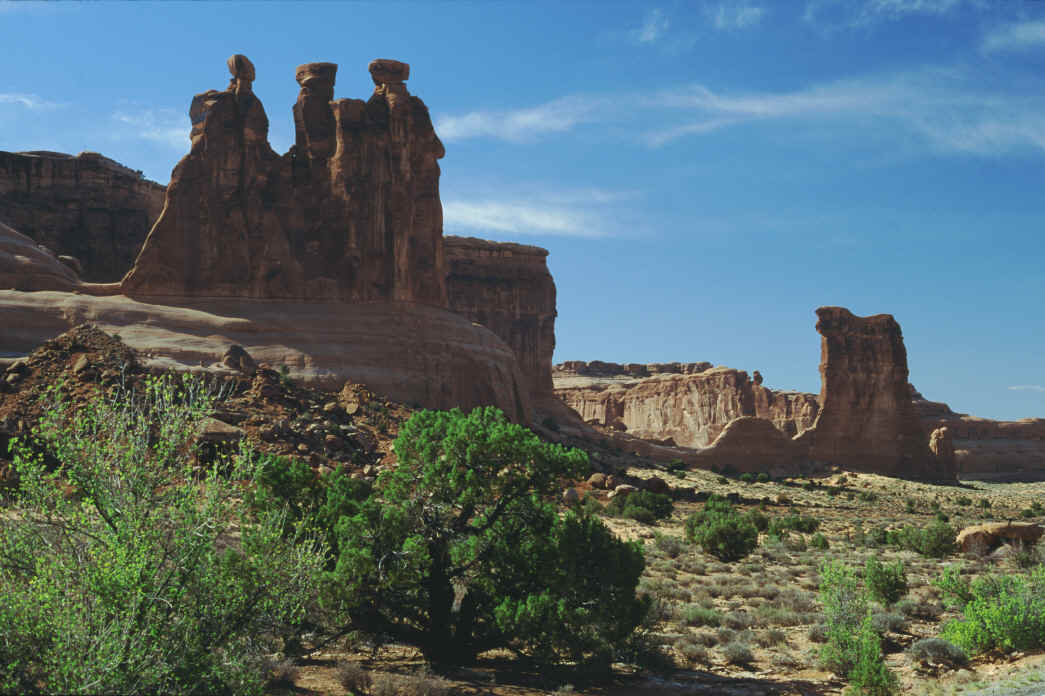
This shows how the fallen double arches might have
looked: 
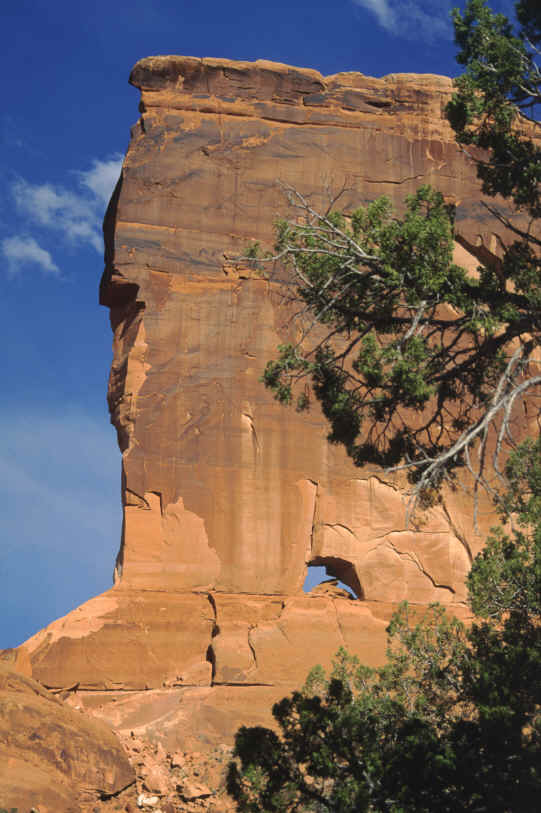
The Baby Arch
is the first arch you see after driving into Arches National Park -- if you see
it. It is right behind the Three Gossips, and is an excellent example of
how many arches are made. First, a thin fin of rock develops some cracks,
as can be seen around the opening here. Then rain water gets into the
cracks, and little by little washes out grains of rock. In the winter often
the rain water freezes, which causes it to expand -- this increases the size of
the crack, which may fill up with water again, which again freezes and expands
the crack. This is an extremely slow process. But after an opening
is started, sometimes pressure from all the rock above weighing down on the
opening can cause "exfoliation", which is when pieces of rock chip off
suddenly. On rare occasions, an arch can increase its size dramatically,
even within seconds... but the forces leading up to that sudden event took many
thousands of years. See the Skyline Arch below for an example.
The impressive Skyline Arch
is seen by practically everybody who drives the whole length of the park road,
being right beside the road near its end. It is the most dramatic example
ever recorded of an arch suddenly increasing its size, literally
overnight. In November of 1940, a massive boulder broke loose and
slid out of the opening, more than doubling the size of the arch. A
"before" picture is shown below this picture.
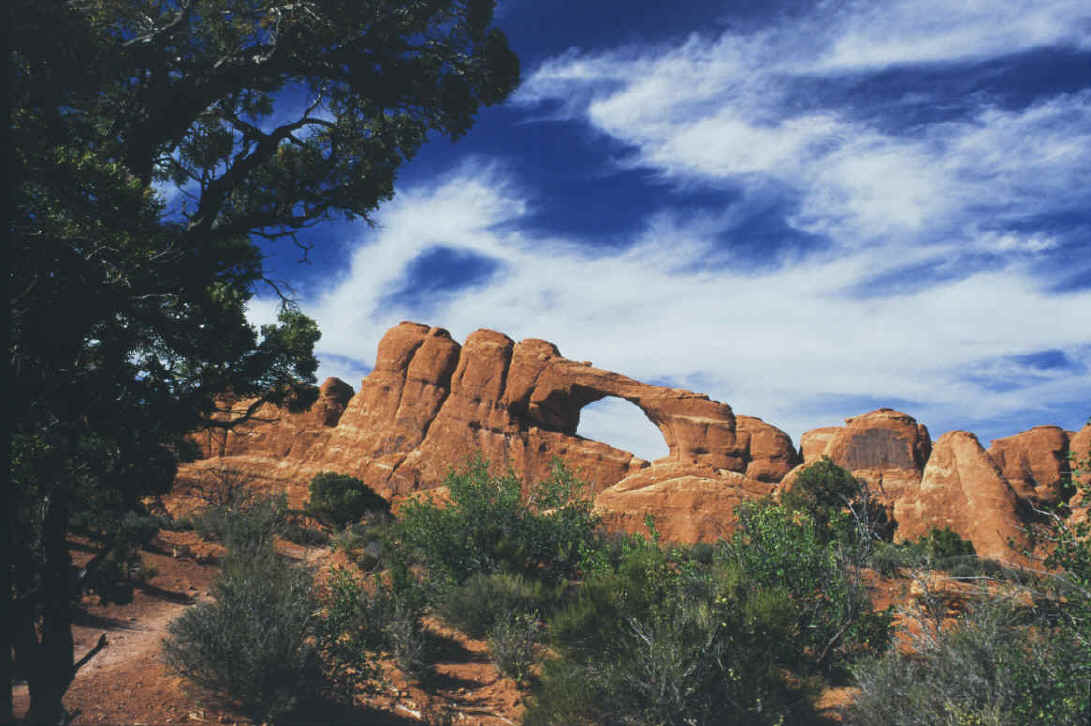

Ring Arch
Hardly a visitor in a thousand gets to see this interesting
arch. There are no signs or trails leading to it, and it can be difficult
to find without a topographical map -- it took me three tries. Even though
some parts of the park get too many visitors, there are still many
isolated areas and arches you can visit where you may be the only person who has
been there for days.
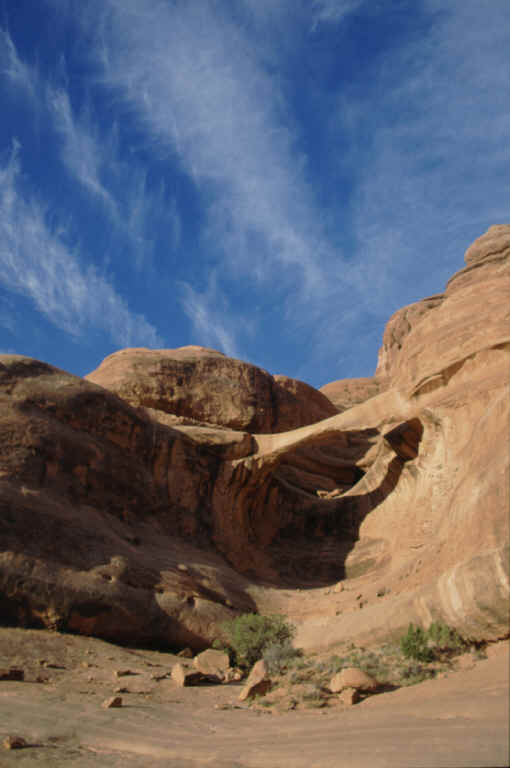
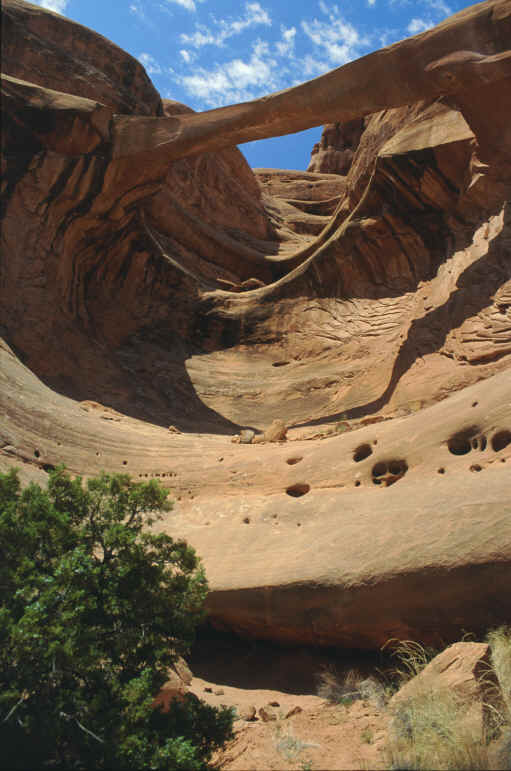
Another hidden, isolated arch in the park is the little Box
Arch -- which made a nice flat place
for me to rest one hot day.
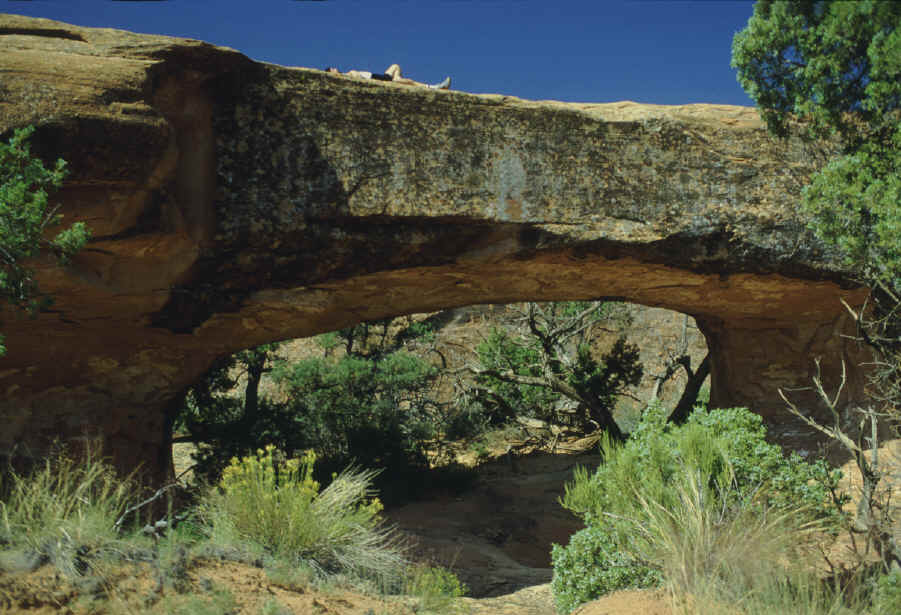

The Tunnel Arch
is near the Landscape Arch in the northern section of Arches Park. It is
an impressive circular span, complete here with a German tourist who had to make
a mighty dash to get up the slope. Notice the secondary pothole opening to
the left.

The Partition
Arch
is one of the highest arches in the park and has the grandest view of
any of them. The partition that gives it its name technically separates it
into two separate arches. But when you are standing on the other side of
the partition, which is just a large arm of rock coming down from the main span,
it feels like one large, impressive arch.
Another famous rock formation in Arches National Park is the Balanced
Rock. The snowy LaSal mountains are behind.
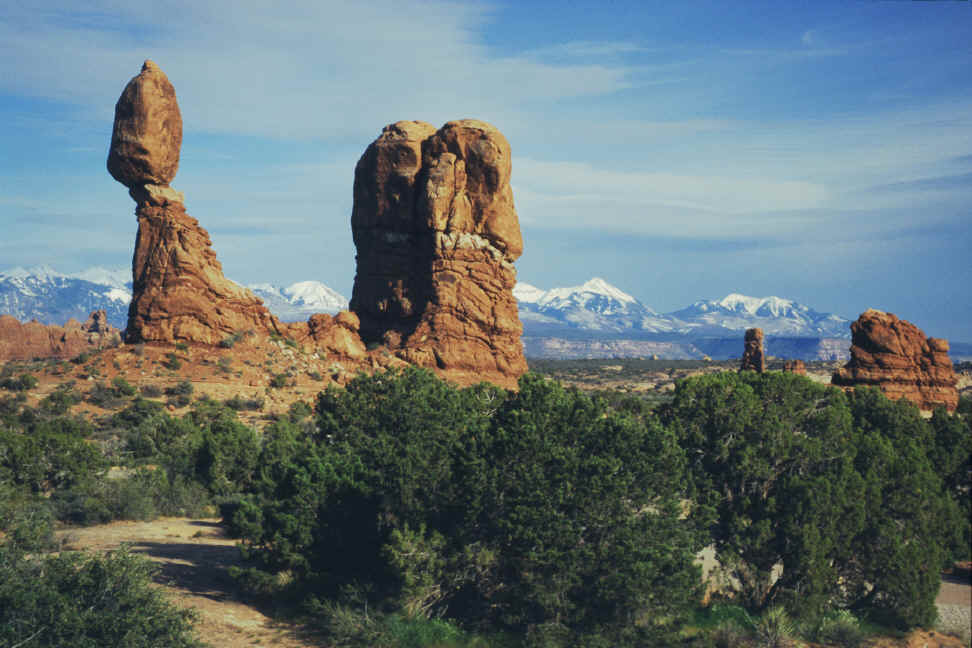
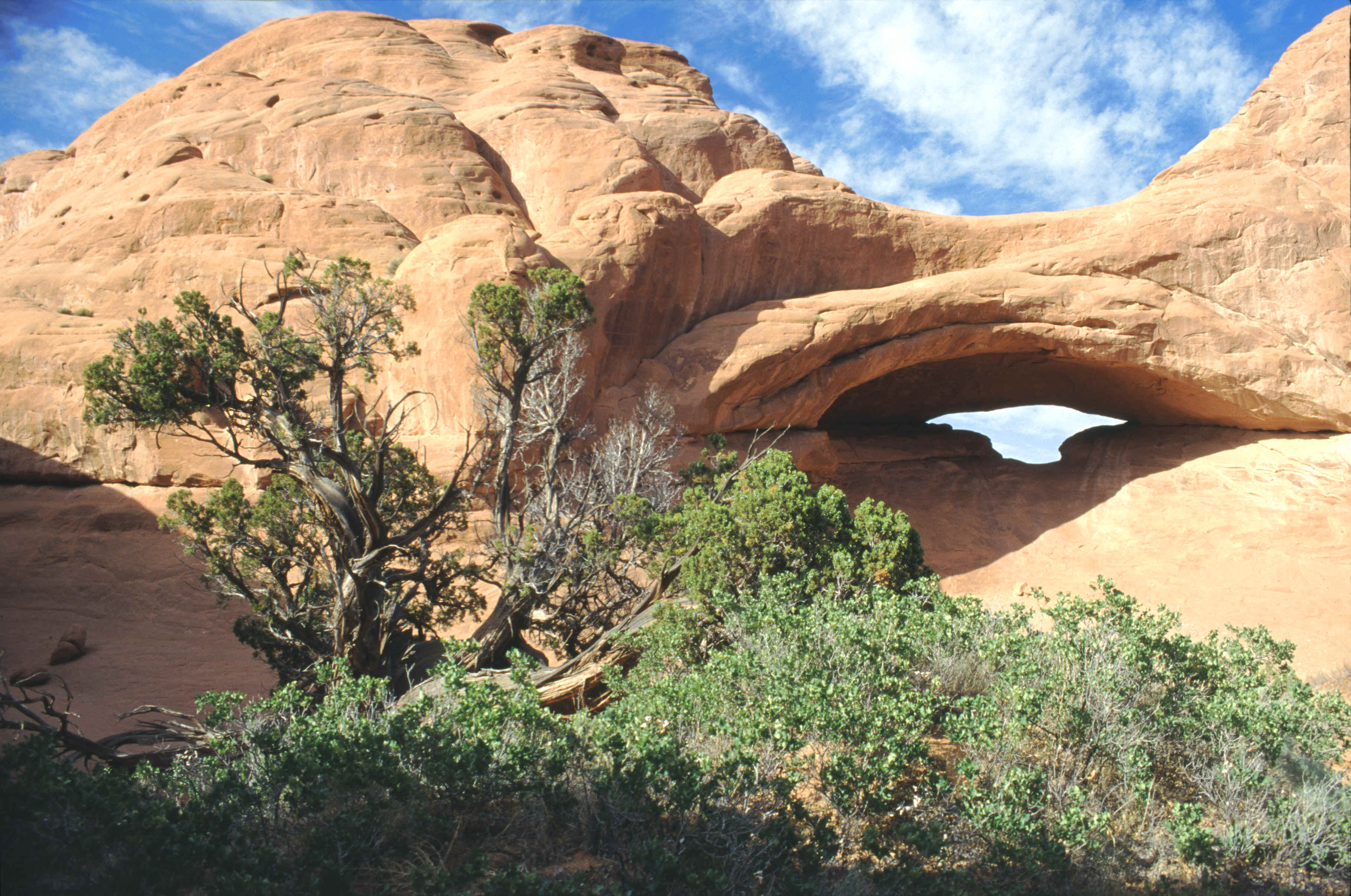
The Eye of the Whale
gets missed by most visitors to Arches National Park, though it is
not far from the main road, up a rough 4-wheel-drive road from the Balanced
Rock.
Leaping Arch
In the same butte as the Eye of the Whale, on the
north end; not sure what the name means, I just know it's one of the most
frustrating arches to get inside that I've ever encountered. Often you can
tell that an arch is simply impossible to get inside, at least for untrained
climbers, or that it's too dangerous... but this one just looks like it ought to
be easy, or at least possible! But no, I've tried 5 times, from the top
and from both sides... even going to far as to take a rope once (with somebody
to help lift me back up), and another time to carry some boards and screws out
with me in an attempt to make a ladder. But no, failure! But at
least I have been right on top of it.
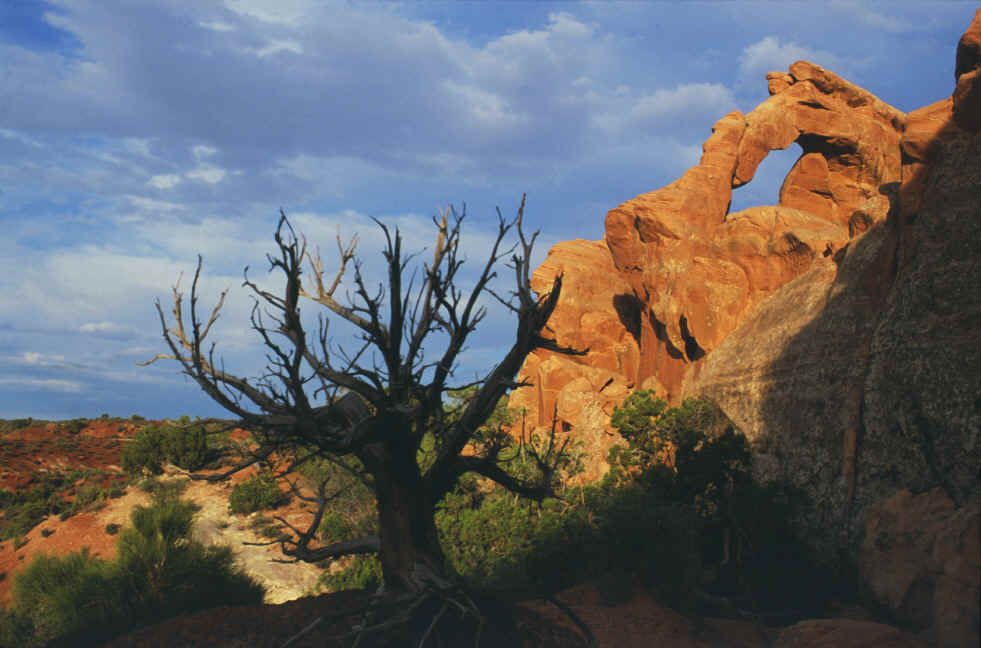
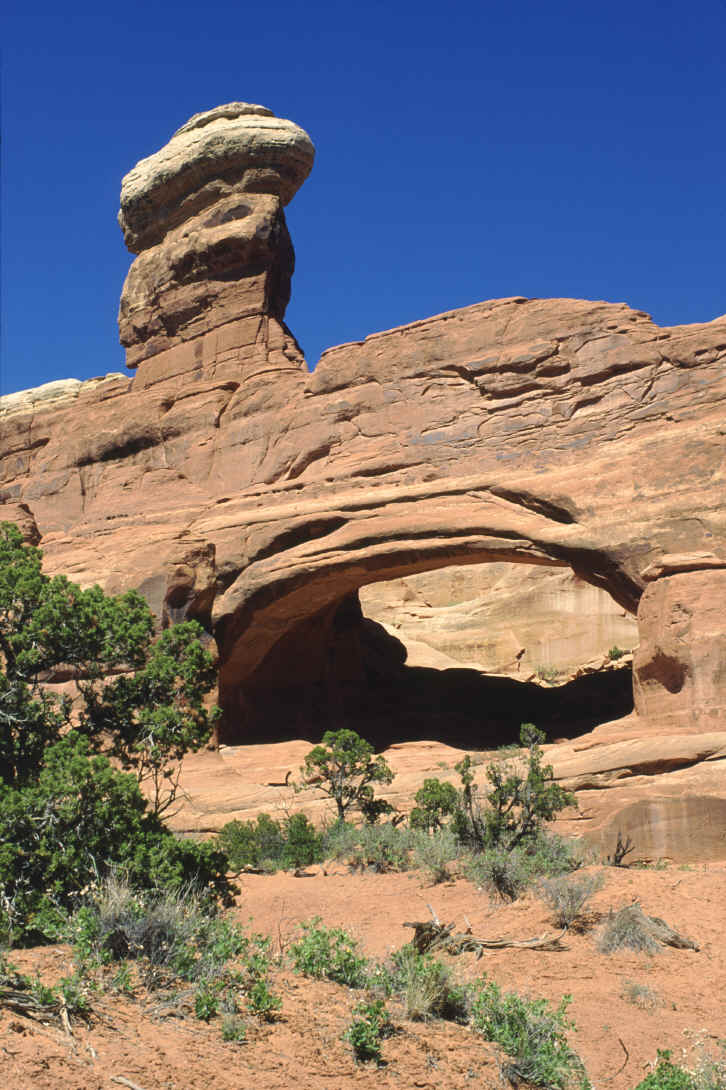
Tower Arch
This seems to have been the first arch in the park to have been
"discovered", or at least publicized, and led to the eventual
discovery of all the others; which is ironic since it is now the remotest and
least-visited of all the really major arches in the park. It is farther up
the same 4WD road as the Eye of the Whale, and then involves a very sandy hike
-- walking in sand is not fun and is not easy! But this grand arch with
its impressive tower is well worth the effort; and on a busy spring day with too
many tourists in the park, you may very well the the only one at the Tower
Arch.
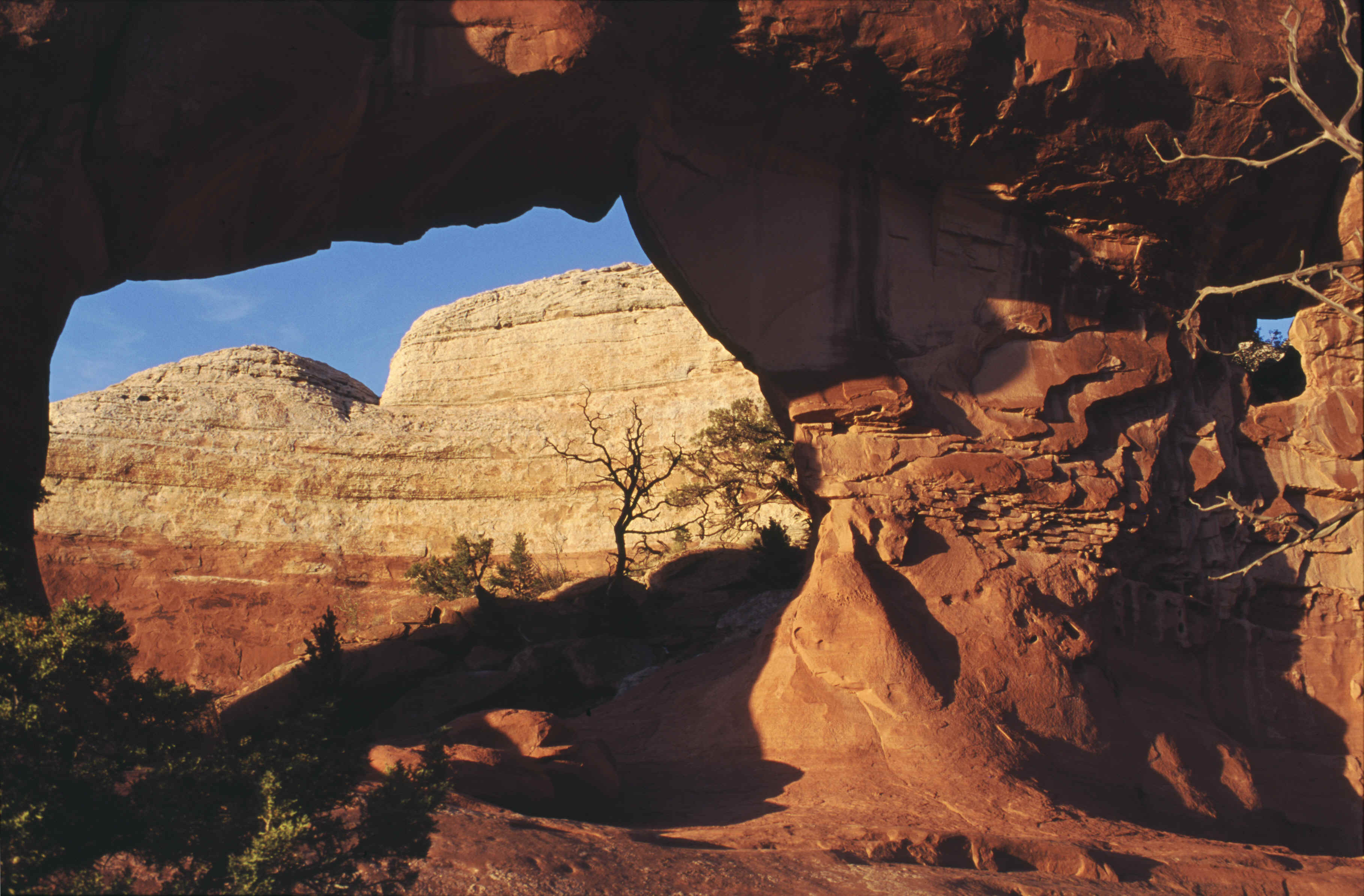
Crystal Arch:
This pretty and colorful arch gets few visitors, being far off the main trail in
the Devil's Garden area of the park. Only a small trail goes to it, though
bushwhacking your way out to it from the Pine Tree Arch is the quickest
route. The outcrop of rock which contains it can be seen when looking
through the Pine Tree Arch. The arch has a small window to the right of
the main opening.
The Pine Tree Arch
is a good-sized span, close to the Landscape Arch, and easy to get to from the
main trail. It would no doubt get more appreciation if it wasn't so near
that famous giant; most people just give it a glance on their way to its
enormous neighbor.
